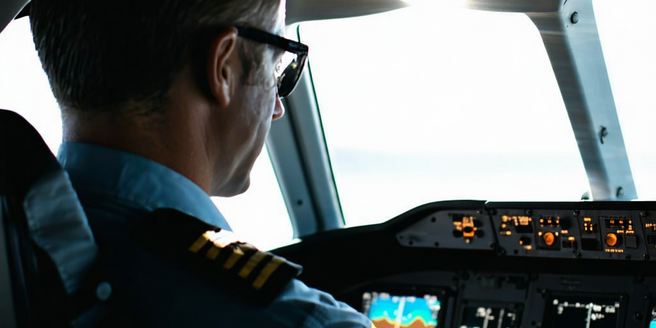
Understanding Sunshine Disturbances and Their Impact on Aviation
Sunshine disturbances, often underestimated, can significantly affect aviation operations. These disturbances include solar radiation, which can interfere with aircraft instruments and GPS systems. Moreover, advancements in aviation technology have made it possible to track solar activity in real-time. Additionally, blinding sunlight can impair pilot visibility during takeoff, flight, and landing phases. Pilots are often trained to manage these challenges effectively. It’s essential for flight crews to be equipped with the latest technology to counteract these issues. The heat generated by intense sunlight can also impact aircraft structural integrity and fuel efficiency. Understanding these effects is crucial for airlines to ensure safe and efficient flight operations. The aviation industry often collaborates with meteorologists to predict and mitigate sunshine-related challenges, ensuring pilots are well-prepared for any potential disruptions.
How Meteorological Changes Affect Flight Safety
Meteorological changes play a crucial role in aviation safety as they influence aircraft operations and pilot decision-making. Changes such as shifts in wind patterns, storms, or temperature variations can impact fuel consumption, flight paths, and landing approaches. Additionally, pilots are trained to recognize and adapt to sudden weather changes to ensure safe flying conditions. Turbulence, resulting from weather changes, poses risks to in-flight safety and passenger comfort. These disruptions can be particularly challenging on long-haul flights where unexpected weather can strain resources. Advanced weather forecasting tools allow airlines to anticipate these changes, modifying flight plans accordingly. Effective communication between meteorologists and flight crews ensures that aircraft can adapt to real-time atmospheric conditions, minimizing disruptions and maintaining high safety standards.
Predicting Weather Patterns: Tools and Techniques Used by Airlines
Airlines rely on a range of sophisticated tools and techniques to predict weather patterns, ensuring the safety and efficiency of flights. Doppler radar and satellite imagery are essential for identifying weather fronts and storms. Additionally, computational models interpret weather data to forecast atmospheric changes. These technological advances allow airlines to operate with greater reliability and confidence. Partnerships with meteorological agencies provide airlines with accurate and timely weather reports. In recent years, there has been an increasing emphasis on integrating artificial intelligence into weather prediction models. Pilots and operation teams use this information to make informed decisions on flight paths and altitudes. Staying ahead of weather patterns assists in reducing delays, optimizing fuel consumption, and maintaining passenger safety.
Case Studies: Incidents Where Sunshine Disturbances Played a Role
In aviation history, several incidents have highlighted the impact of sunshine disturbances on flight safety. One notable case involved a commercial flight experiencing instrument failure due to solar radio interference. Additionally, researchers are actively investigating new materials for cockpit windows that can better filter UV rays and glare. Another incident saw a pilot momentarily blinded by intense sunlight during landing, resulting in a runway overrun. These events underscore the need for pilots to be trained in managing unexpected sunshine-related challenges. Recognizing the importance of addressing these issues, the aviation industry is constantly seeking innovative solutions. Airlines continue to study such incidents to improve training and adapt technologies to minimize risks posed by sunshine disturbances, ultimately enhancing pilot preparedness and passenger safety.
Enhancing Flight Safety Protocols Against Variable Weather Conditions
To enhance flight safety amidst variable weather conditions, the aviation industry constantly updates its protocols. Emphasizing predictive technology, airlines invest in advanced radar and satellite systems for better weather tracking. With these advancements, airports are also adopting cutting-edge technology to better anticipate and manage weather-related disruptions. As part of these improvements, airport ground staff receive specialized training to handle weather emergencies efficiently. Pilot training programs now include modules on weather-related risk management and decision-making under adverse conditions. Collaboration with meteorologists ensures that real-time weather updates are promptly communicated to crews. Additionally, the integration of automated systems aids in addressing sudden weather changes, reinforcing flight safety and efficiency. These measures strive to mitigate risks associated with unpredictable climates, safeguarding passengers and crew alike.
